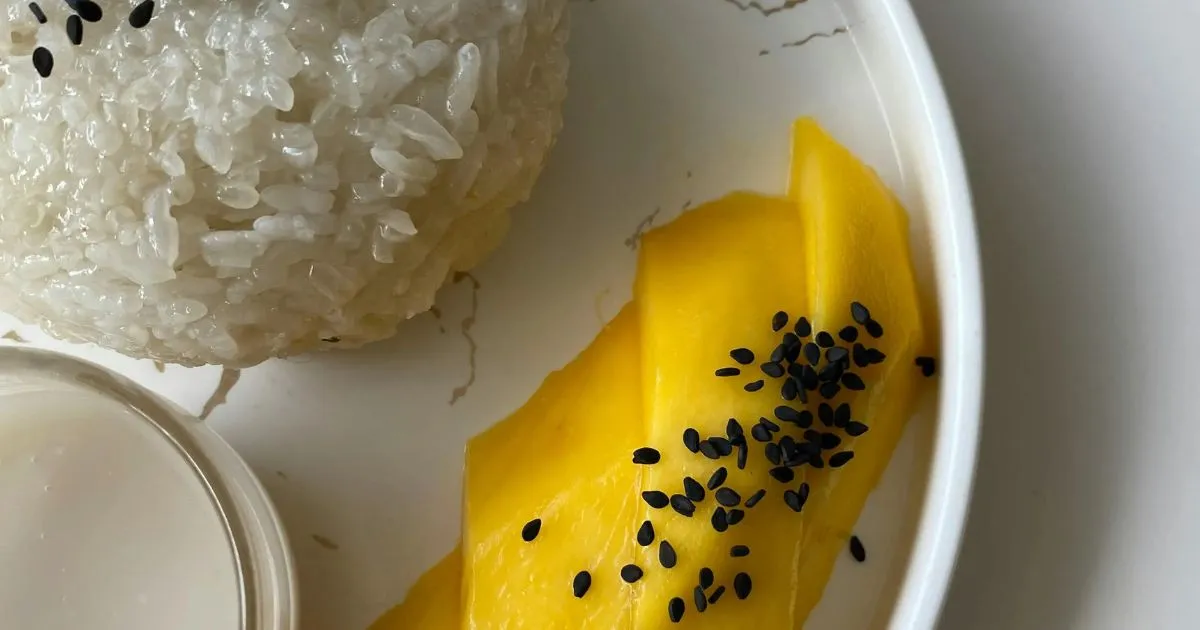Asian cuisine is known for its bold flavors and diverse textures, and this extends to its desserts. From sweet to savory, traditional to modern, Asian desserts offer a delightful way to end a meal. These treats often blend unique ingredients like rice, beans, tropical fruits, and aromatic flavors to create a balance of sweetness, saltiness, and earthiness. Whether you’re looking for something creamy, chewy, or crispy, Asian food desserts provide an incredible variety of flavors. In this article, we’ll explore easy Asian desserts that you can make at home, using accessible ingredients and simple techniques. You’ll learn about key dessert categories, must-try recipes, and essential tips to master these delicious treats in your own kitchen.
Table of Contents
Understanding Asian Desserts
Unlike Western desserts, which often focus on butter, cream, and sugar, Asian desserts frequently incorporate rice, beans, tropical fruits, and unique flavor profiles. Many traditional treats balance sweetness with a touch of saltiness or earthiness, making them incredibly satisfying.
Popular Categories:
1. Rice-Based Desserts
Sticky rice and glutinous rice play a major role in many Asian sweets, offering a chewy, comforting texture. Dishes like mochi, sticky rice cakes, and sweet rice puddings are staples across various Asian cuisines and are among the most popular Asian easy desserts.
2. Bean and Nut-Based Treats
Red bean paste, black sesame, peanuts, and chestnuts add depth and a subtle sweetness that pairs well with both sweet and savory flavors. These ingredients are used in pastries, soups, and steamed desserts, making them essential components of Asian desserts.
3. Savory Asian Desserts
Some Asian desserts incorporate umami-rich ingredients like soy sauce, miso, or salted egg yolk, creating a unique taste experience. These flavors balance the sweetness, making them irresistible to those who prefer complex flavors in their desserts.
4. Fruit-Based Delights
Mango, durian, jackfruit, and lychee are commonly used to add natural sweetness and fragrance. Fruit-based desserts such as mango sticky rice, shaved ice, and fruit jellies are refreshing and light, making them a staple in easy Chinese desserts and other Asian cuisines.
5. Tea-Infused Sweets
Green tea, matcha, and black sesame are often used to enhance both the flavor and health benefits of desserts. Matcha-flavored cakes, ice creams, and puddings are widely loved for their slightly bitter, earthy notes.
Why Understanding These Categories Matters
When you recognize the key ingredients and techniques behind Asian desserts, you’ll have a greater appreciation for their complexity and balance. Whether you’re craving something soft and chewy, sweet and savory, or light and refreshing, there’s an Asian dessert that suits every palate. And best of all, many of these treats can be recreated at home with just a few essential ingredients and simple methods.
Must-Try Easy Asian Desserts
1. Mango Sticky Rice (Thailand)

A simple yet irresistible dessert featuring sticky rice cooked in sweet coconut milk, topped with fresh mango slices.
| Ingredient | Quantity |
| Glutinous rice | 1 cup |
| Coconut milk | 1 cup |
| Sugar | 2 tbsp |
| Salt | 1/4 tsp |
| Ripe mango, sliced | 1 |
Instructions:
- Rinse the glutinous rice thoroughly and soak it for at least 4 hours or overnight.
- Steam the soaked rice until fully cooked (about 25 minutes).
- In a saucepan, heat coconut milk, sugar, and salt until dissolved but not boiling.
- Pour the sweetened coconut milk over the rice, mix well, and let it sit for 10 minutes to absorb the flavors.
- Serve warm or at room temperature with fresh mango slices on top.
Tip: For added fragrance, cook the rice with pandan leaves, and drizzle extra coconut sauce before serving.
2. Sesame Balls (Jian Dui – China)

Crispy on the outside and chewy inside, these deep-fried rice flour balls are filled with sweet red bean paste, making them a favorite among easy Chinese desserts.
| Ingredient | Quantity |
| Glutinous rice flour | 1 cup |
| Water | 1/4 cup |
| Sugar | 2 tbsp |
| Red bean paste | 1/2 cup |
| Sesame seeds | 1/2 cup |
| Oil for frying | As needed |
Instructions:
- Mix the glutinous rice flour with warm water and sugar to form a soft dough.
- Divide the dough into small portions and flatten each piece.
- Place a teaspoon of red bean paste in the center and seal the dough around it.
- Roll the balls in sesame seeds until fully coated.
- Heat oil to 350°F (175°C) and deep-fry the sesame balls until golden brown and crispy.
Tip: Ensure the oil temperature is stable to prevent the sesame balls from bursting while frying.
3. Steamed Pandan Cake (Kuih Seri Muka – Malaysia)

A two-layered cake with a creamy pandan custard on top and sticky rice on the bottom, representing a classic example of savory Asian desserts.
| Ingredient | Quantity |
| Glutinous rice | 1 cup |
| Coconut milk | 1 cup |
| Sugar | 1/4 cup |
| Pandan extract | 1 tsp |
| Eggs | 2 |
| Cornstarch | 2 tbsp |
Instructions:
- Cook the glutinous rice and mix it with half of the coconut milk and a pinch of salt.
- Spread the cooked rice in a greased steaming tray and press it down firmly.
- Blend pandan extract, eggs, sugar, cornstarch, and the remaining coconut milk until smooth.
- Pour the pandan mixture over the rice layer and steam for 30 minutes until set.
- Allow to cool before slicing into squares.
Tip: For a more vibrant green color, use fresh pandan leaves blended with a bit of water instead of extract.
FAQ
1. Are Asian desserts difficult to make?
Not at all! Many Asian desserts use simple techniques and ingredients that are easy to find. With practice, you can master these recipes quickly.
2. Where can I find ingredients for Asian desserts?
You can find most ingredients at Asian grocery stores or online retailers. Common items like coconut milk, glutinous rice, and red bean paste are often available in regular supermarkets.
3. Can I substitute ingredients if I can’t find them?
Yes! For example, you can use jasmine rice instead of glutinous rice in some recipes, though the texture may vary slightly.
Conclusion
Asian desserts are a wonderful fusion of flavors, textures, and cultural influences that make them truly special. Whether you’re drawn to the chewiness of glutinous rice, the fragrant touch of pandan, or the creamy richness of coconut milk, these treats bring joy with every bite. The best part? You don’t need to be a professional chef to recreate these authentic flavors at home. From easy Chinese desserts to savory Asian desserts, there’s something for everyone.
Now it’s your turn! Gather your ingredients, follow these simple steps, and start experimenting in your kitchen. Try out different combinations, embrace new flavors, and most importantly—have fun with the process. Which recipe will you try first? Let us know in the comments, share your creations, and inspire others to dive into the delicious world of Asian desserts!

